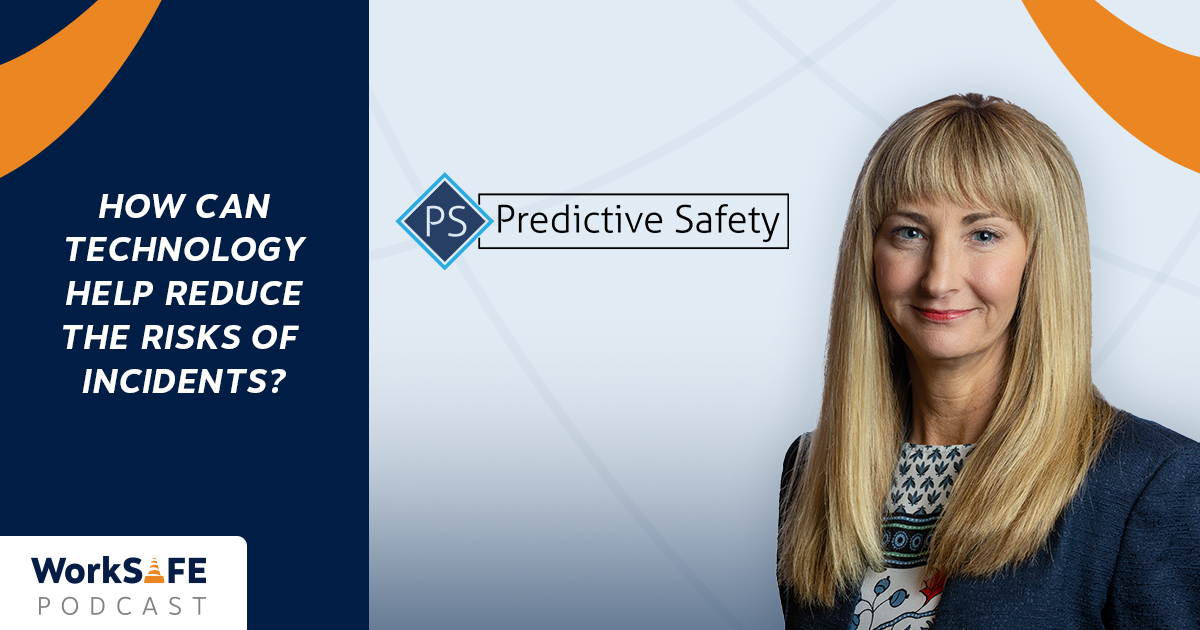While many of us spent the last few months lounging blissfully in our homes, sipping coffee out of our favorite mugs and tapping away on our laptops, we felt fortunate that the “new normal” didn’t wreck our businesses. We were still productive and efficient from home, we didn’t have to wear shoes, and we didn’t have to pay for office space.
For others, remote work was never an option. Businesses came to a halt. Workers were left hanging.
Now it’s time to play catch-up, and operations managers face a new dilemma. How do you meet rapidly approaching deadlines without exceeding your budget, without exhausting your workers, and without letting COVID-19 slip into your workforce?
Right now, productivity vs. safety may seem like a dichotomy, but it isn’t and never should be. If businesses are to survive and thrive again, neither safety nor productivity can trump the other.
What happens if productivity trumps safety?
Incentivized by bonuses or pressured to keep their jobs, workers start to compromise safety and quality for mere output. This is the perfect environment for safety incidents and falling quality standards, which in turn results in greater costs to the business such as:
- Medical costs
- Worker’s compensation claims
- Fines
- Attorney fees
- Damaged equipment and property
- Lost time
- Less experienced workers taking over for injured workers
- Low workplace morale and absenteeism
- Poor employee retention
- Bad PR
On the other hand, if operations managers take chunks out of every day to pursue safety goals and ignore productivity demands, the business won’t survive long enough to be safe.
So, how do you strike a balance where neither safety nor production suffers?
1. Operations Managers increase productivity and safety at work by creating a strategy to unite safety and productivity goals.
You need an overarching strategy that unites safety and production goals. If your safety and production departments are separate–if you have safety professionals to ensure safety and different managers to drive production–your overarching operations strategy must effectively integrate safety and production in a way that eliminates confusion for managers and their workers. Different supervisors who enforce different objectives cause worker performance to vary from shift to shift. This problem is further aggravated when one supervisor, typically the one in charge of production, has greater authority to discipline or reward workers.
When workers are more compelled to comply with production managers and their goals, safety becomes a second priority. This disconnect between departments and the confusion and instability that ensue disadvantage both production and safety goals.
A good overarching strategy should ensure that safety and production remain top priorities regardless of which manager is on duty or how much authority he/she has.
2. Operations Managers increase productivity and safety at work by communicating that strategy frequently, interactively, and assertively.
Once you have a clear and strong strategy to unite safety and production goals, your supervisors and managers must be trained to communicate this strategy with their colleagues and workers effectively. If executives and managers know the importance of safety to production and vice versa but fail to communicate this with the workers, the overarching strategy becomes pointless.
To bring the strategy out of the boardroom and onto the worksite where it matters, operations managers need to communicate this strategy in three ways:
Communicate Frequently. Remind workers daily of how safety and production go hand-in-hand. Repetition is key if you want the strategy to stay clear amidst changing shifts, new workers, new managers, or new operational challenges. Since talking time is limited, create clear and engaging flyers to surround workers with the culture and strategy you are promoting.
Communicate Interactively. Simply lecturing workers that both safety and production are important is not sufficient. You need to engage them in a conversation if you want them not only to understand you but also to agree with you. To make communication more interactive, try talking to workers one-on-one; ask for feedback, both personally and via formal surveys and questionnaires; ask workers questions to confirm their comprehension and identify areas of confusion.
Communicate Assertively. In order for your frequent and interactive communication to hold traction, you need to be assertive. This doesn’t mean shouting at your workers and trying to intimidate them into agreeing with you. It means making expectations clear and then following up with the workers to ensure they comply. If you don’t follow up, workers will not feel accountable. No matter how much they agree with you and the overarching strategy, they won’t feel motivated enough to take the safest and most productive route when an easier option presents itself or when changes in the workplace such as new managers or new challenges threaten the existing strategy.
3. Operations Managers increase productivity and safety at work by using technology to establish stable routines that enforce their strategy.
Even if you have a great strategy that makes for seamless integration of production and safety objectives and a management team of great communicators, you still need a sustainable way to cement safety and productivity into the daily routines of your workforce.
When global pandemics, new management, short deadlines, or limited budgets cloud your safe production strategy, when time constraints, distance, and large workforces make frequent, interactive, and accountable communication difficult, technology can help hold down the fort.
Technology in the workplace can help uphold productivity and safety simultaneously by:
Establishing Workplace Accountability: Using technology to establish accountability ensures that safety and productivity objectives are always a priority, regardless of the manager on duty or the unique challenges of the day. It also eliminates human error when work gets chaotic, and stress leads to oversights.
For example, AI-SAFE, which stands for Automated Intelligent System for Assuring Safe Working Environments, uses real-time video analysis, advanced algorithms, and machine learning to ensure employees wear appropriate PPE when entering a work area.
When life gets in the way and workers come on-site fatigued, distressed, ill, or intoxicated, they may feel like they can work safely and productively. If no safety incident occurs, they prove themselves right. However, to uphold safety and productivity standards, accountability must exist even without an incident.
AlertMeter®, a 60-second alertness test taken before beginning a shift, can ensure that workers report to work with the cognitive alertness and mental clarity to work productively, safely, and to the highest performance standards.
Predicting Workplace Safety and Production Risk: Technology that predicts upcoming safety risks can not only prevent an accident but also safely optimize worker performance to maximize production.
For example, PRISM, our fatigue management software, alerts a worker when they’re reaching high fatigue levels. To manage this risk before it compromises their safety and disrupts production, the worker chooses a quick countermeasure and takes a 60-second alertness test.
Taking a few minutes to reduce upcoming risks proactively does more than prevent a potentially disastrous and costly accident. It ensures that the worker continues their shift with enough alertness and focuses on minimizing errors and maximizing output while upholding quality standards.
Facilitating Communication Throughout the Workforce: When time or distance threatens meaningful communication between workers and supervisors, technology can ensure that essential conversations are occurring when and where necessary.
The AlertMeter®, for example, ensures that supervisors are made instantly aware of workers who might not be able to perform their tasks safely and productively. Even if you have dozens of workers to oversee, it alerts you to the worker that needs attention at the exact moment that they need attention.
For example, one employee took his AlertMeter® test before performing a safety-sensitive task.
The employee scored abnormally, and his supervisor was alerted. The ensuing conversation revealed that the employee had been working for an extended period in extreme heat and had not been hydrating. After taking a water break in the shade, the employee’s focus and alertness were restored to return to work in a safe and productive manner.
Conclusion
To overcome the challenges of the pandemic and other challenges that frequently threaten business performance, operations managers must realign their strategies to withstand new demands on productivity and threats to safety. This strategy must be communicated frequently, interactively, and assertively with all managers, supervisors, and workers. Technology must be utilized to establish accountability, reduce risks, and facilitate communication during uncertain times. By doing so, operations managers can optimize workforce productivity and performance and create a strong workplace culture to endure future challenges.
References:
https://www.ehstoday.com/safety-leadership/article/21919012/safety-and-performance-excellence-safety-vs-productivity-if-either-wins-both-lose
https://www.staffmanagement.com/blog-3-strategies-achieve-safety-and-productivity-goals/
https://www.industryweek.com/operations/safety/article/22016230/safety-and-performance-excellence-safety-vs-productivity-if-either-wins-both-lose
https://www.ehstoday.com/safety-leadership-conference-2015/article/21917265/safety-is-productivity
Safer, More Productive Shifts Can Start Today
Request a no-obligation Discovery Meeting, and a member of our team of fatigue-risk mitigation experts will walk you through this revolutionary technology so you can run safer, more productive shifts.
Fill out the form below, and we'll follow up to:
- Ask a few additional questions about your situation
- Understand your scope and timeline
- Determine if there's a good fit
- Schedule your Discovery Meeting
"*" indicates required fields











